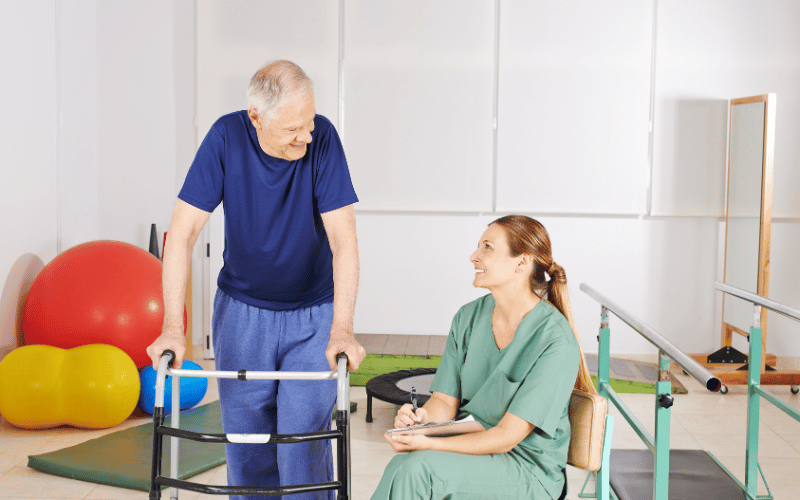8. Difficulty Walking and Movement Limitations: The Physical Impediment of Paget’s Disease

As Paget’s disease progresses, it can lead to difficulty walking and limitations in movement. These issues typically arise from a joint problems, and bone deformities. The legs, pelvis, and spine – critical structures involved in walking and movement – are among the areas most commonly affected by Paget’s disease.
When the disease affects the legs, it can lead to bowed legs due to the rapid bone remodeling causing the bones to deform. This deformation can make it difficult for individuals to walk and maintain their balance. The affected bones may also become weaker, increasing the risk of fractures, which can further impact mobility.
Now, let’s look at how the pelvis fits into this picture. The pelvis is a basin-shaped structure in your lower body that connects the spine to the legs. It’s vital for transferring weight from the upper body to the lower body when you’re standing or walking. When Paget’s disease affects the pelvis, it can lead to bone pain and an increased risk of fractures, both of which can impede movement.
If the spine is affected, the vertebrae can become misshapen, leading to an exaggerated curvature of the spine, also known as kyphosis. This can affect balance, making it challenging to walk or move around without discomfort or difficulty.
Further, the disease’s effect on joint health can contribute to movement limitations. As we discussed earlier, Paget’s disease can lead to secondary osteoarthritis, a condition where the cartilage in the joints breaks down. When this happens, the bones rub against each other, leading to joint pain and stiffness, which can limit movement.
In some cases, individuals may also experience muscle weakness, which can further contribute to difficulties with walking and movement. The reasons for this are multifactorial and may include disuse atrophy from reduced physical activity due to bone pain, or it could be a direct result of the disease process itself.(8)